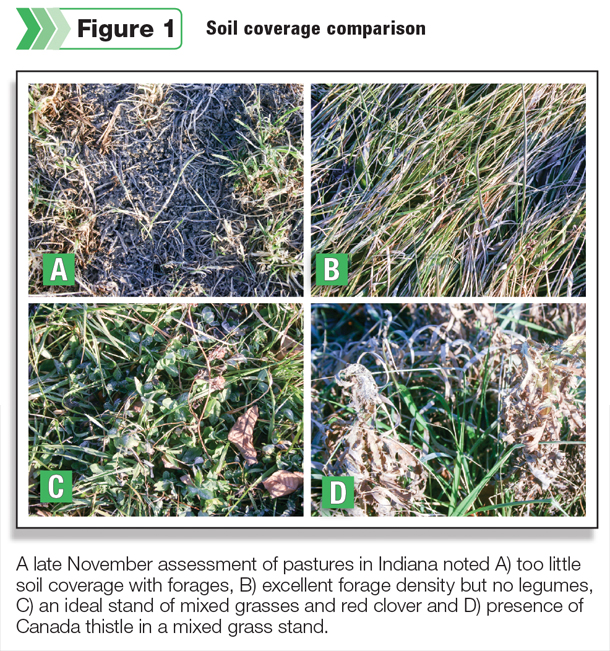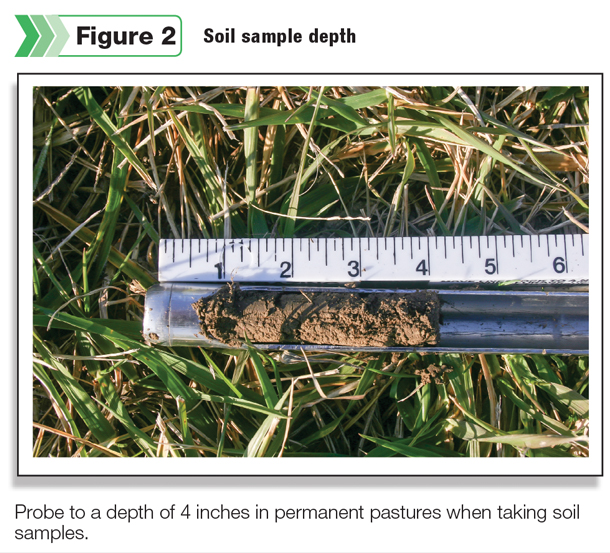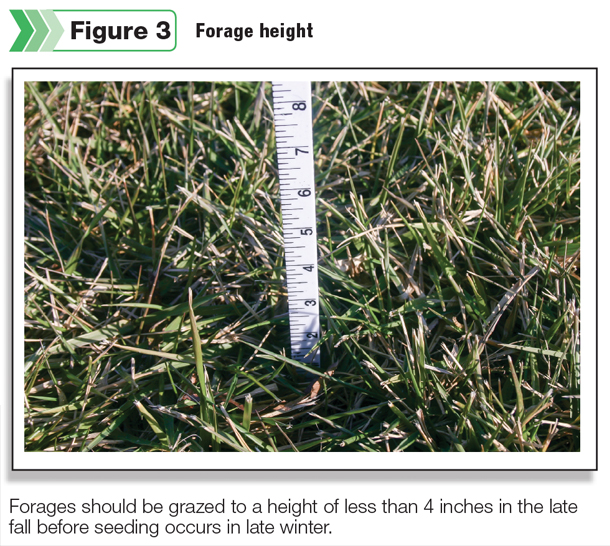The most successful cattleman is observant of the cattle’s well-being and the overall health of the forages too. Weekly scouting is necessary, so preparation and follow-through of needed practices can be accomplished in a timely fashion.
The base pasture
An ideal beef cattle pasture in the Midwest is a mixture of adapted cool-season grasses and legumes. Legumes should contribute about one-third of the dry matter yield in the grass-legume mixture. Legumes in the mixture provide nitrogen for the grass component of the stand, more productivity mid-summer as compared to cool-season grasses alone and improved quality.
To meet the composition goal of one-third, legume plant density should be approximately two plants per square foot. Controlling broadleaf weeds in a grass-legume pasture with herbicides will likely injure or kill legumes too. Timing a needed herbicide application when legume contribution is small and reintroduction is recommended would be best.
Another important thing to assess during scouting is to note how much sunlight is being intercepted by the plant canopy. The forage species should capture more than 90 percent of the sunlight, meaning that the forage canopy is thick and that little light is reaching the soil surface.
Steps to improvement
To have the greatest chance of success in making improvements to pastures, there are steps that need to be followed. Too often, individuals think improvements can be made with a one-time broadcast of forage seed without considering all steps necessary before and after seeding.
1. Assess the stand
Consider these questions: Are the forages dense and what is the composition of the pasture (Figures 1a – d)?

Take an inventory of all plant species, including weeds. Are any of the weeds invasive or possibly poisonous? Is the contribution provided by legumes in the stand more valuable than the negative concern of the weeds?
2. Determine weed control strategy
If weeds are problematic, determine whether clipping, herbicide use, avoiding overgrazing and/or soil fertility improvement will reduce the weed concern.
If chemical control is needed, consider what herbicides do the best job of control for the concerning weeds, timing of application, harvest restriction, plant-back restriction and cost.
3. Collect and submit soil samples to a testing laboratory
From a uniformly managed area of 25 acres or less, take 20 to 30 core samples (about 1 inch in diameter), or about one sample per acre in a random or zigzag fashion (Figure 2).

Sample depth should be 4 inches. Take separate samples from non-uniform areas based on differences in soil type and/or slope position. A soils map can help locate different soil types in established forages. The Web Soil Survey is a useful tool that will help delineate soil types on the farm (http://websoilsurvey.nrcs.usda.gov).
4. Lime and fertilize according to the soil test
If soils are acid, lime should be applied at least six months prior to seeding. Nitrogen fertilizer should not be applied if legumes will be introduced, as this will increase competition of existing grasses with seedlings.
Lime and fertilizer should not be applied to frozen soil. If the pasture will be subdivided into paddocks, apply the amendments before subdividing to improve the efficiency of the operation.
5. Graze existing forage so little residual growth remains
In the late fall, allow cattle to graze to a height of less than 4 inches (Figure 3). The purpose of leaving little growth is so broadcast seed has a better opportunity of getting to the soil surface for germination and seedling establishment.

6. Select the forage species and varieties
Forage species selected should be adapted to the soil types in the pasture. In a permanent pasture, perennial forages should be utilized. Once the species are selected, evaluate the attributes of different varieties in the species including yield, pest resistance traits, relative maturity date and quality.
7. Determine seeding date and seeding rate
Late winter is an ideal time to overseed the existing pasture. Determine the appropriate pure live seeding rates for the species selected and then determine how much bulk seed of each should be sown per acre.
Determine the percent pure live seed from the seed tag.
- % pure live seed = (% purity x % germination)/100
- Pounds bulk seed per acre = desired pounds pure live seed per acre / (% pure live seed/100)
8. Select a seeder
Broadcast seeding rhizobia (for nitrogen fixation) inoculated legumes in the late winter has provided good results. A broadcast seeder attached to an all-terrain vehicle works well even on wet soils where other methods of seeding cannot be done.
This method also works well in small-acreage areas. Broadcasting grasses is generally more difficult because some seeders do not have a seeding mechanism that keeps seed from bridging in the seed box.
The density of grass seed is also less than legumes so distribution can be difficult under windy conditions. Preferably, do not blend the grasses and legumes together, because the spread width is not similar.
If seeding on frozen soil in the late winter, a traditional or no-till drill can be used to distribute the seed at a depth of around ¼ inch.
If phosphorus fertilizer and a limited amount of potassium fertilizer is needed, seed can be mixed with the fertilizer and applied with a commercially available air delivery fertilizer applicator.
9. Calibrate the seeder
Take time to adjust the seed delivery mechanism on the seeder; selected so the desired rate of bulk seed can be delivered. Many seeders have a chart with a suggested opening size for different forage crops. Use this information as a starting point for calibrating the drill and not the likely end setting.
10. Graze the newly sown pasture or machine harvest
In the spring, once the grass is growing and the ground has dried out enough to support livestock, graze the pasture up to the point that the cattle could begin to consume the developing forage seedlings.
Remove the cattle and rest the pasture eight to 10 weeks for the seedlings to fully establish. If the topography permits safe removal of vegetation as a hay or silage, another option is to cut to a height above the developing seedlings and remove the growth as hay or silage when grasses are beginning to head and legumes are beginning to flower.
11. Grazing established grass-legume pastures
Rotationally graze from spring through fall. To rotate, use several fields or divide a field into paddocks with an electric fence. Adjust the stocking rate to defoliate grass-legumes within a seven-day period. Do not overgraze.
Provide plenty of recovery time, usually from 21 to 42 days, depending on time of season and rate of regrowth. An average of a seven-day grazing period and 28-day rest period will require five fields or paddocks.
12. Fertilize as necessary
Top-dress fertilizer according to soil test.
13. Renovate again when needed
If the stand becomes thin or the contribution from legumes is less than 30 percent, the process should be repeated. ![]()

-
Keith D. Johnson
- Professor of Agronomy
- Forage Extension Specialist Purdue University
- Email Keith D. Johnson








